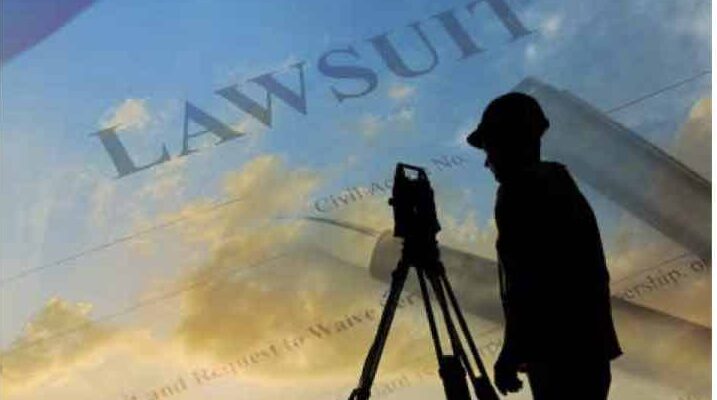This month’s question comes from a reader. “What is the customary solution to discovery of extra block length when all except the end lot status quo ante are equal 50-foot-wide lots and the extra space is within the parking area of the end lot?”
In my experience, an excess in the block is rarely challenged. I know a few instances, but the more common case is a deficiency in the block. This occurs when a landowner feels cheated out of what is rightfully theirs. In this case there is a 1905 plat with 50-foot-wide lots in a block that has 3.5 feet of extra width in the last lot. One of the owners in the block discovered the extra footage and sued her neighbor for her pro rata share of the excess.
Armed with a document prepared by an engineer demonstrating the prorated apportionment, she won her case. Was this tried in a kangaroo court? I said in my last column on appellate court opinions, at the trial court level you can get “anything from the ridiculous to the sublime.”
The question raises an issue I have with the practice of surveying and that is—in many ways—surveying is practiced as a belief system. I also refer to this problem as “Surveying Mythology.” Surveyors just believe there are certain things they are supposed to do, although the activities have no basis in reality. I’m not saying this about our reader or his practice. The question itself pulls back the curtain of the mistaken belief system.
For example, Surveying Mythology dictates that any shortage or excess in a block of lots must be proportionately distributed throughout the entire block, affording all lot owners their share in the windfall or loss. The same mythology supports the misguided idea that a section must be broken down and reconstituted every time a surveyor steps in to survey a portion thereof.
These two are just the tip of the iceberg: resolving boundary problems is practicing the law; property rights are beyond the purview of the land surveyor; surveyors do not determine what people own; surveyors survey deed lines not property lines; surveyors cannot interpret the law; surveyors aren’t even supposed to know the law; measurements are superior to monuments; and the list goes on.
Our reader’s question invokes presumptions and inferences, both of which must be used by the retracing surveyor in developing a well-reasoned opinion on the location question. A presumption is a legal fact until proven wrong. The burden of proof will be on the party seeking to rebut the legal fact. An inference is not a legal fact, it is a mental process that must pass the two-part test of reasonableness and commonsense.
In this situation we can draw at least two such inferences. First, the landowner who sued her neighbor for her share of the excess was not the last lot. She would already be in possession of the largest lot in the block. She is not the second to the last lot. If she were, she would have sued for half the excess. So, she’s somewhere else in the block or she wouldn’t need a proration plan. Second, the block was surveyed and laid out at the time of subdivision. How else would we get a row of 50-foot-wide lots, and this could be verified by examining the subdivision plat.
Proceeding with our inferences, the Common Grantor Doctrine or at the least, the Doctrine of Monuments is in play. Both doctrines rest on the presumption that monuments in the ground at the time of the conveyance are infallible because the grantor and the grantee walked the bounds, accepted the monuments, and reliance set-in establishing the position of the property rights on the monuments and the associated property lines. Just the thought that measurements will be superior to the monumented and established boundaries brings us back to Surveyor Mythology.
There is another reason to just leave it alone. There is a little document known as the Constitution of the United States. I know our politicians don’t care about it and nobody reads it, but on this issue there is one little part where it says you cannot have your rights adjudicated without due process of law. So, unless every landowner in the block (and their mortgage companies) are brought into court for an adjudication of their property rights, even a judge cannot prorate excess or shortage throughout a block. What makes surveyors think they can?

